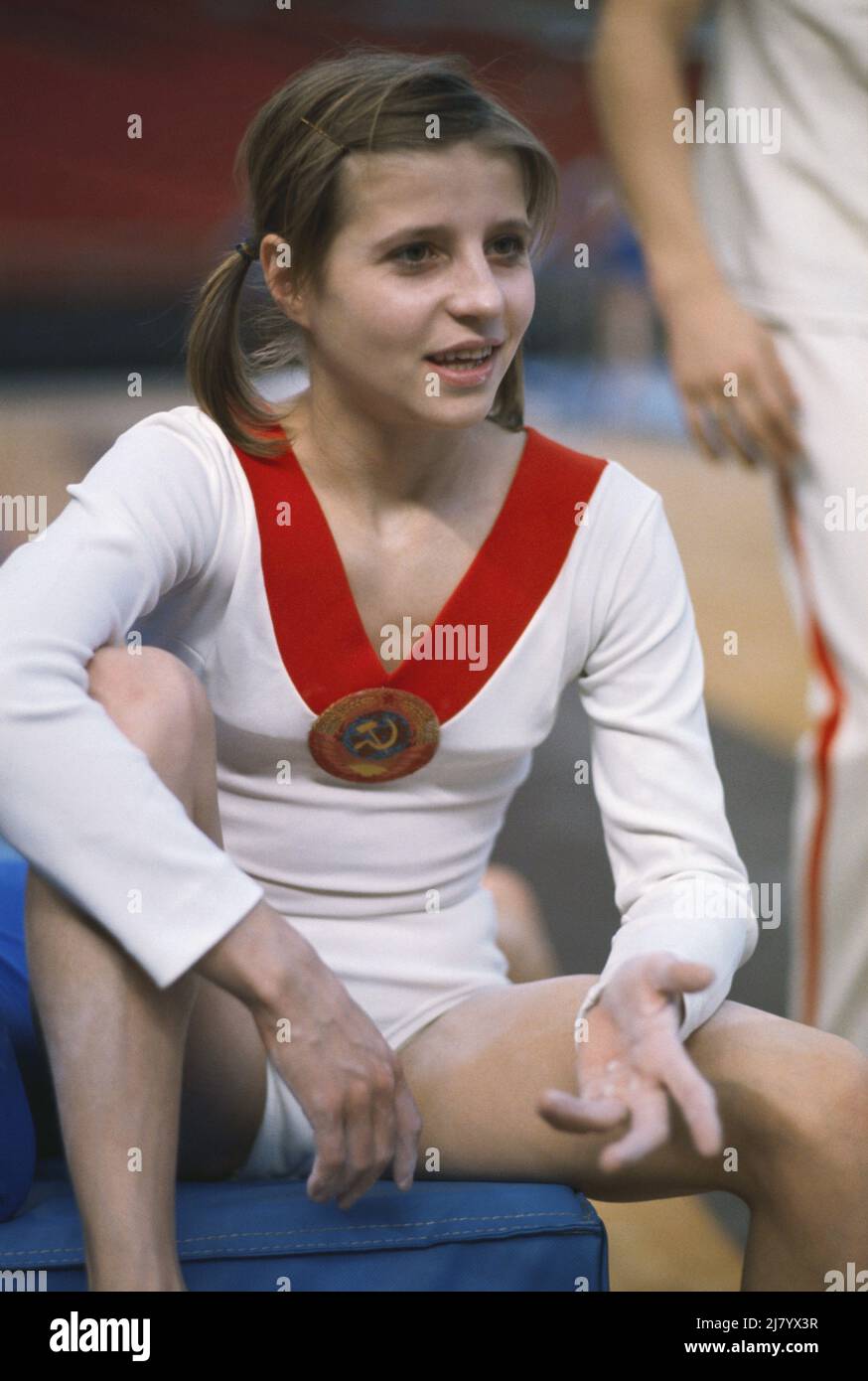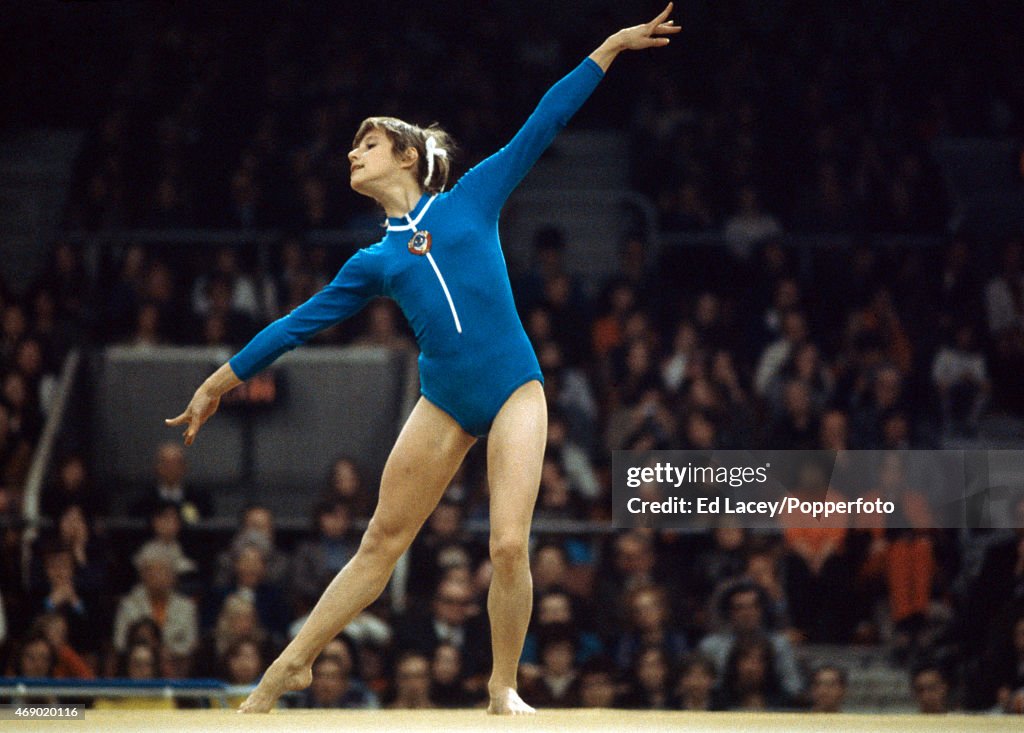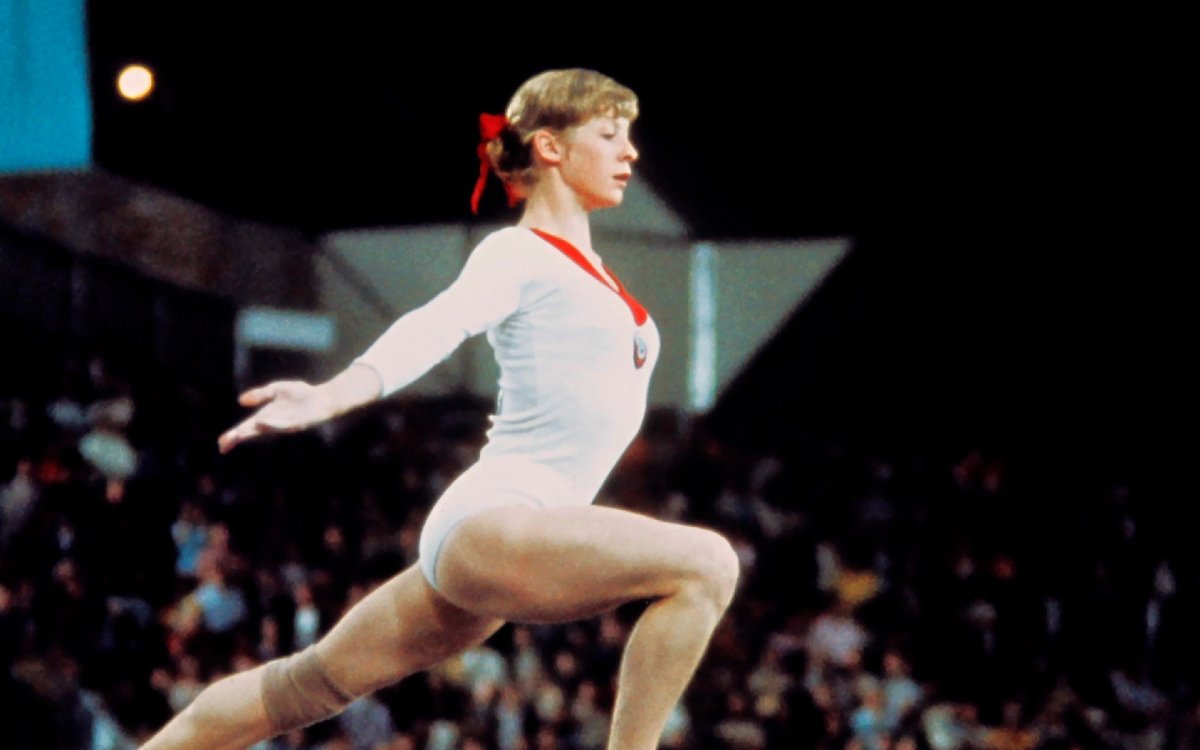Olga Korbut: The 'Sparrow From Minsk' Who Soared To Stardom
In the annals of sports history, few names shine as brightly and evoke as much awe as that of Olga Korbut. This Belarusian retired gymnast, affectionately nicknamed "The Sparrow from Minsk," captivated the world with her groundbreaking routines and an infectious charisma that transcended national borders. Her performances at the 1972 Munich Olympic Games didn't just win her medals; they fundamentally reshaped the sport of gymnastics and left an indelible mark on global culture.
Olga Korbut's journey from humble beginnings in the Soviet Union to becoming a worldwide sensation is a testament to her unparalleled talent, daring spirit, and unwavering dedication. She was a pioneer who introduced innovative and seemingly impossible moves, inspiring a generation of young athletes and forever changing how gymnastics was perceived. This article delves into the remarkable life, achievements, and enduring legacy of Olga Korbut, exploring how she overcame challenges, faced criticism, and became a true role model for millions.
Table of Contents
- Olga Korbut: A Biographical Sketch
- Humble Beginnings: Olga Korbut's Early Life and Training
- Munich 1972: The Moment the World Met Olga Korbut
- Beyond the Medals: Olga Korbut's Enduring Impact
- Montreal 1976: Continued Success and Evolution
- Overcoming Adversity: Challenges Faced by Olga Korbut
- Life After the Spotlight: Olga Korbut's Journey
- The Unforgettable Legacy of Olga Korbut
Olga Korbut: A Biographical Sketch
Olga Valentinovna Korbut, born on May 16, 1955, in Grodno, Byelorussian SSR, USSR (now Hrodna, Belarus), is a retired Belarusian gymnast who competed for the Soviet Union. Her diminutive stature and seemingly fragile appearance belied an incredible strength and an unyielding spirit that would soon capture the hearts of millions worldwide. Known as "The Sparrow from Minsk," Olga Korbut became synonymous with innovation and grace in the sport of artistic gymnastics. Here is a brief overview of her personal data:| Attribute | Detail |
|---|---|
| Full Name | Olga Valentinovna Korbut |
| Nickname | The Sparrow from Minsk |
| Date of Birth | May 16, 1955 |
| Place of Birth | Grodno, Byelorussian SSR, USSR (now Hrodna, Belarus) |
| Nationality | Belarusian (competed for Soviet Union) |
| Height (at peak) | 1.52m (approx. 4'11") |
| Weight (at peak) | 38 kg (approx. 84 lbs) |
| Olympic Medals | 4 Gold, 2 Silver |
| Coach | Renald Knysh |
Humble Beginnings: Olga Korbut's Early Life and Training
Born into a modest family in Grodno, Olga Korbut's childhood in the 1960s Soviet Union was marked by simplicity and hardship. She lived in a small, 15-square-meter room that she shared with her three sisters. Her father struggled with alcoholism, and her mother worked tirelessly to support the family. This challenging environment, however, did not deter the young Olga from pursuing her passion for gymnastics. At the tender age of 11, Olga Korbut's life took a pivotal turn when she entered a Soviet sports school. It was here that her exceptional talent began to blossom under the guidance of a coach who would become instrumental in shaping her career and revolutionizing the sport itself.The Discovery of a Talent: Renald Knysh's Influence
Renald Knysh, a visionary coach, quickly recognized the unique potential in the young Olga Korbut. He saw in her not just a gymnast, but an artist capable of pushing the boundaries of what was thought possible in the sport. Knysh's training methods were unconventional, focusing on daring and innovative moves that capitalized on Korbut's agility, small stature, and fearless approach. Their partnership would lead to some of the most iconic moments in gymnastics history. In 1969, at her first USSR meet, Olga Korbut, then a mere 14-year-old, etched her name into the record books by becoming the first gymnast to perform a backward aerial. This move, a precursor to what would later be known globally as the "Korbut Flip," signaled the arrival of a new era in gymnastics—an era defined by risk, innovation, and unparalleled athleticism.Munich 1972: The Moment the World Met Olga Korbut
The 1972 Munich Olympic Games were the stage upon which Olga Korbut transformed from a talented Soviet gymnast into a global superstar. At just 17 years old, her performances were nothing short of spectacular, capturing the public imagination with their charismatic and daring nature. She brought a refreshing blend of athleticism, artistry, and an undeniable charm that resonated with audiences worldwide. Her dramatic routines, particularly on the uneven parallel bars and the balance beam, were unlike anything seen before. She didn't just perform; she narrated a story with every twist, flip, and smile. The intensity of her concentration, followed by her infectious grin after a successful routine, created an emotional connection with viewers that few athletes achieve.The 'Korbut Flip' and Daring Innovations
It was at the Munich Games that Olga Korbut unveiled her signature move, the "Korbut Flip," a backward flip performed while standing on the high bar of the uneven bars, followed by a re-grasp of the bar. This audacious maneuver, along with her backward flips from the balance beam, became instant sensations and staples of the sport's repertoire. These moves were not just difficult; they were revolutionary, challenging the traditional, more balletic style of gymnastics prevalent at the time. Her innovative moves, combined with her captivating personality, earned her three gold medals (team, balance beam, and floor exercise) and one silver medal (uneven bars) at the 1972 Munich Olympics. The sheer excitement and emotional rollercoaster of her performances cemented her status as the breakout star of the Games. She instantly became a worldwide sensation, endearing herself to millions with her daring spirit and charming smile.Beyond the Medals: Olga Korbut's Enduring Impact
Olga Korbut's influence extended far beyond the medal podium. Her charismatic performances in Munich ignited a global fascination with gymnastics, transforming it from a niche sport into a mainstream spectacle. She became a household name, and her image adorned magazine covers and television screens around the world. Her success triggered a significant "youngification" of the sport, with a massive influx of girls under the age of 10 eager to emulate their idol. This surge in participation reshaped the competitive landscape, leading to a focus on younger athletes who could master the increasingly complex and physically demanding routines.Revolutionizing Gymnastics: From Ballet to Artistry
Before Olga Korbut, gymnastics was often perceived as a "sport ballet," emphasizing grace, fluidity, and classical lines. Korbut, however, redefined it. Her daring, acrobatic, and high-flying routines elevated gymnastics into a unique blend of athleticism and artistry, a true athletic art form. She proved that power, innovation, and risk could coexist with beauty and precision. Beyond the sport itself, Olga Korbut's fame had an unexpected diplomatic impact. Following her Olympic triumph, she was invited to meet the U.S. President, a rare honor for a Soviet citizen during the height of the Cold War. This meeting and subsequent tours unexpectedly fostered "sports diplomacy," helping to ease tensions between the United States and the Soviet Union in the years that followed. She became a cultural ambassador, demonstrating the power of sport to bridge divides and foster understanding.Montreal 1976: Continued Success and Evolution
Four years after her sensational debut, Olga Korbut returned to the Olympic stage at the 1976 Montreal Games. While the element of surprise that characterized her Munich performances had faded, she continued to demonstrate her prowess and dedication to the sport. She contributed significantly to the Soviet team's success, helping them secure another gold medal in the team competition. Additionally, she earned a silver medal on the balance beam, showcasing her enduring skill and consistency at the elite level. Her presence in Montreal underscored her continued relevance and influence in gymnastics. Though new stars were emerging, Olga Korbut remained a beloved figure, her name synonymous with the revolutionary spirit she had brought to the sport. She continued to inspire with her precise executions and the sheer joy she exuded during her routines, further cementing her legacy as one of gymnastics' all-time greats.Overcoming Adversity: Challenges Faced by Olga Korbut
While Olga Korbut's career was marked by extraordinary success and global adoration, it was not without its challenges. The intense pressure of elite Soviet sports, the demanding training regimens under Renald Knysh, and the constant scrutiny of being a global celebrity undoubtedly took their toll. The data mentions that she "overcame challenges" and "faced criticism," which is a common experience for athletes who push boundaries and challenge norms. The relentless pursuit of perfection and the physical toll of innovative, high-difficulty routines often lead to injuries and mental fatigue. Furthermore, the transition from being a celebrated athlete to life beyond the competitive arena can be difficult. The expectations placed upon her, both by her country and by a global audience, must have been immense, adding layers of complexity to her journey. Her ability to navigate these pressures while maintaining her performance level speaks volumes about her resilience and mental fortitude.Life After the Spotlight: Olga Korbut's Journey
After her illustrious gymnastics career, Olga Korbut embarked on a new chapter of her life. She continued to be a public figure, albeit in different capacities. Her fame opened doors to various opportunities, including appearances in film and television. She is known for her roles in "The Bronze" (2015) and "When the Trees Fall" (2018), and she also made appearances on iconic sports programs like "ABC's Wide World of Sports" (1961), showcasing her enduring connection to the world of athletics and entertainment. However, her post-gymnastics life also saw its share of personal struggles, including financial difficulties. In a poignant turn of events, Olga Korbut made headlines when she sold off some of her cherished Olympic medals. She parted with two of her four gold medals, a decision that highlighted the often-unseen struggles faced by retired athletes, even those who once stood atop the world stage. This act, while deeply personal, underscored the human aspect of a legendary figure, reminding the public that even heroes face real-world challenges.Induction into Halls of Fame and Cultural Impact
Despite the personal challenges, Olga Korbut's immense contributions to gymnastics and sports in general have been widely recognized and celebrated. In 1982, she received a significant honor, becoming the inaugural inductee into the International Women's Sports Hall of Fame. This induction cemented her place as a pioneer and a transformative figure in women's sports, acknowledging her groundbreaking achievements and her profound influence on generations of athletes. Her legacy continues to resonate globally. She is often cited as one of the most popular and influential gymnasts of all time, her name synonymous with the daring spirit and innovative artistry that revolutionized the sport. Her impact transcended competitive results, turning gymnastics into a captivating spectacle and inspiring countless individuals to pursue their dreams with courage and determination.The Unforgettable Legacy of Olga Korbut
Olga Korbut's story is far more than a tale of Olympic medals; it is a narrative of revolution, inspiration, and the enduring power of human spirit. From her humble beginnings in Belarus to her electrifying performances on the world stage, she broke barriers, redefined possibilities, and left an indelible mark on gymnastics and beyond. The "Sparrow from Minsk" didn't just fly; she taught the world to dream bigger, to challenge conventions, and to embrace the beauty of daring. Her innovative moves, charismatic personality, and the sheer joy she brought to her performances continue to inspire gymnasts and fans alike. Olga Korbut remains a testament to the idea that true greatness lies not only in winning but in transforming a sport, touching hearts, and leaving a legacy that transcends time. We encourage you to revisit her iconic performances, share her incredible story, and reflect on how one courageous individual can change the world, one daring flip at a time. What are your favorite memories of Olga Korbut's performances? Share your thoughts in the comments below!
Gold medal gymnast olga korbut hi-res stock photography and images - Alamy

Gymnast Olga Korbut of the USSR in action during a floor exercise at

Video of Olga Korbut's Banned 'Dead Loop' Resurfaces, Goes Viral - Newsweek